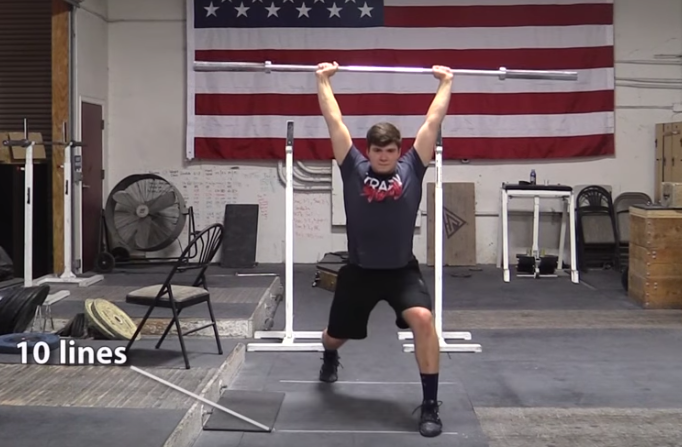California Strength’s Dave Spitz just put up an awesome video breaking down the jerk in weightlifting. He goes over all of the jerk variations, who they work best for, when to use them, and different accessories to assist each.
Before you start to think, “I already know the jerks, and which I’m best at.” That may be true, but it never hurts to learn more, especially from one of the most seasoned American Olympic lifting coaches. Plus, the jerk is often one of the most complex movements a lifter can achieve. It’s a combination of speed, coordination, strength, stability, and body awareness.
Check out the video below where Spitz breaks down the three types of jerks.
There were a few key points worth calling out in text and mentioning. First, Spitz uses a cool graphic to illustrate the three jerk types. And within this graphic he breaks down what they all have in common, and then which types have physical overlaps.
The graphic below shows what every jerk variation has in common: Commitment, courage, and timing.
[The clean & jerk offers a ton of benefits, not just improving strength and power.]
After pointing out what every jerk variation has in common, Spitz shows similarities in-between each jerk area where they overlaps with one another. There’s overlap of various physical athletic traits between each jerk variation, check them out below.
Squat + Power
- Superior Leg Strength
- Enhanced Shoulder Mobility
Split + Power
- More Explosive Lower Body Drive
- More Explosive Punch Into Position
Split + Squat
- Enhanced Quadricep Function
- Enhanced Isometric Coreline (Transverse Abdominals)
Image courtesy CaliforniaStrength YouTube channel.
The next part of the video, Spitz goes over which type of athlete benefits best from each jerk style, the dip:drive types, various accessories to assist each, and what type of athlete will often perform/benefit from them.
Split Jerk
- Athlete Type: Any
- Dip:Drive: Shallow/Quick OR Deep/Controlled
- Accessories: Foot Work Drills, Jerk Ladder
- Application: Any (Useful for late adopter, as it’s the least difficult.)
Image: Jerk Ladder courtesy CaliforniaStrength YouTube channel.
Squat Jerk
- Athlete Type: Shorter Limbs and Longer Torso
- Dip:Drive: Shallow or Deep/Controlled
- Accessories: Tall Jerk Variation, Overhead Squat Recovery
- Application: Early Adopter
Power Jerk
- Athlete Type: Longer Limbs and Shorter Torso
- Dip:Drive: Deep/Controlled
- Accessories: Plyo Power Jerk, Behind the Neck Push Press
- Application: Transitory
No matter what jerk style you use and practice, it’s never a bad idea to have a solid understanding of why you’re doing it, and what it requires.
Feature image screenshot from CaliforniaStrength YouTube channel.


